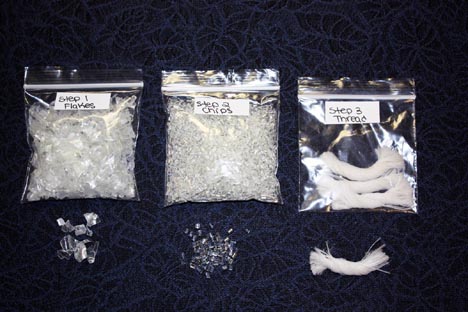Blue Devils to Don ‘Green’ Gowns at Commencement
For the first time, commencement apparel will be made of material produced from recycled plastic bottles.

This May, Duke University students will be wearing green caps and gowns when they receive their diplomas.
Oh, the graduation wear will still be black in color, but the commencement apparel will be made of material produced from recycled plastic bottles.
Jim Wilkerson, the director of Duke Stores and the person responsible for outfitting the graduates, said this effort "is representative of what the university is doing as a whole."
"Everyone on campus, it seems, wants to do what they can to be more environmentally responsible," Wilkerson said. "When we were approached with this opportunity to purchase caps and gowns made from recycled materials, and we were satisfied that the quality of the garments would not be compromised, it was an easy decision."
Wilkerson said the school was approached last year by two vendors, and ended up choosing Oak Hall Cap & Gown Company of Salem, Va., which is Duke's long-standing provider for graduation apparel.
The academic regalia will be made of fabric spun from molten plastic pellets. Each cap and gown will keep 23 used plastic bottles from winding up in landfills. The caps and gowns will be shipped in boxes made of recycled cardboard and in storage bags made from recycled plastic.
Each year, about 4,500 undergraduate and graduate students receive diplomas from Duke, although not all of them participate in commencement ceremonies. If half of them were to use the eco-friendly regalia, that would keep more than 50,000 plastic bottles out of landfills. It also will reduce the carbon dioxide emissions and the amount of energy used in manufacturing fabric from plastic instead of virgin polyester.

"Duke has really committed to sustainability in many different areas, and I am excited that they are continuing to make new initiatives to reduce our impact on the planet," said Duke senior Katie Swails. "As a top-tier university, it is our job to be leaders in this movement, and having such a public display of our ‘green' priorities will be a great statement for the university to make to both graduating seniors and their families."
Wilkerson said the new caps and gowns cost about $2-$3 more than the old ones. Oak Hill has pledged to contribute 25 cents for each gown sold to a campus environmental group designated by the university.
"College students and campuses are at the forefront of environmental conscience and green habits," said Joseph D'Angelo, president of Oak Hall. "When we started seeing such campus trends as biodegradable utensils, we felt developing an environmentally friendly gown was the right thing to do for students, colleges and universities and our planet."
Any students not wanting to hold on to their gowns as a keepsake will be able after graduation to place them in collection boxes around campus, and those gowns will be recycled into a new product, most likely filler for pillows. The price of a cap, gown and hood for students range from $47.50 for undergraduates to $65 for professional students. Ph.D. recipients rent their regalia, which is made of a richer fabric than the other gowns.
"These gowns will help our graduates literally ‘walk the walk' for sustainability and, hopefully, encourage them to think about ways they can address environmental issues in their lives beyond Duke," said Tavey McDaniel Capps, Duke's environmental sustainability director.
---How is a plastic bottle turned into a graduation gown?
Step 1 - Recycled plastic bottles are processed to remove impurities such as labels and caps.
Step 2 - The bottles are then chopped into fragments called "flakes."
Step 3 - Flakes are then melted and solidified into uniform pellets called "chips."
Step 4 - Chips are melted again and extruded into a continuous filament yarn.
Step 5 - The yarn is woven, dyed and finished into a gown.